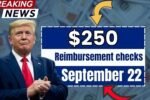The 1976 Bicentennial Quarter is one of the most recognizable U.S. coins, celebrated for its unique design and historical significance. Released to honor the 200th anniversary of American independence, it remains a favorite among collectors and history enthusiasts.
History of the 1976 Bicentennial Quarter
The U.S. Mint introduced the Bicentennial Quarter in 1975–1976 to celebrate the nation’s 200th birthday. Instead of the usual eagle on the reverse, it featured a colonial drummer designed by Jack L. Ahr, with a torch encircled by thirteen stars symbolizing the original colonies. The obverse still displayed George Washington, but with the dual date “1776–1976.” This coin was produced in massive quantities for circulation, along with special silver-clad and proof versions for collectors.
Design Features and Variations
The standout feature of this quarter is its reverse design, a significant departure from traditional motifs. There are three main varieties:
- Copper-Nickel Clad (Circulation Coins): Most common, found in everyday pocket change.
- 40% Silver-Clad (Collector Coins): Sold in special mint or proof sets.
- Proof Coins: Highly detailed strikes with mirror-like surfaces, made primarily at the San Francisco Mint.
Mint Marks and Their Importance
Bicentennial quarters were struck at three mints:
- Philadelphia (No Mint Mark)
- Denver (D Mint Mark)
- San Francisco (S Mint Mark) – Often in proof or silver form.
The mint mark can influence collectibility and price. Silver and proof quarters from San Francisco are typically more valuable than circulation strikes from Philadelphia or Denver.
Value and Pricing Factors
Most circulation Bicentennial quarters are worth face value—25 cents—due to their high mintage. However, certain factors can increase value:
- Material: 40% silver coins are worth more, especially with rising silver prices.
- Condition: Uncirculated or graded coins in high Mint State (MS) grades are more valuable.
- Errors: Rare minting mistakes such as double dies, off-center strikes, or wrong planchet errors can significantly increase value.
Condition and Grading
Collectors often use the Sheldon coin grading scale to evaluate coins, ranging from Poor (P-1) to Perfect Mint State (MS-70). Uncirculated coins with sharp details and no wear are the most sought-after. Proof coins, especially those still in original packaging, can command a premium.
1976 Bicentennial Quarter Values
| Type | Composition | Mint Mark | Typical Value (2025) | Notes |
|---|---|---|---|---|
| Circulation Strike | Copper-Nickel | None / D | $0.25 – $1 | Common, high mintage |
| Proof | Copper-Nickel | S | $1 – $5 | Collectible, mirror finish |
| Silver-Clad Uncirculated | 40% Silver | S | $4 – $8 | Higher melt value |
| Silver-Clad Proof | 40% Silver | S | $5 – $12 | Premium finish, lower mintage |
| Major Mint Error | Varies | Any | $50 – $1,000+ | Value depends on rarity |
Most People Ask (1976 Bicentennial Quarter Value: A Guide for Collectors)
Q1: Is a 1976 Bicentennial Quarter rare?
Most are not rare because millions were produced, but silver versions, proofs, and error coins can be valuable.
Q2: How can I tell if my Bicentennial Quarter is silver?
Silver versions have an “S” mint mark and were sold in special sets. They also have a different edge color—solid silver rather than copper-colored stripes.
Q3: What is the most valuable 1976 Bicentennial Quarter ever sold?
Some rare error coins and high-grade silver proofs have sold for thousands of dollars at auctions.
Q4: Are Bicentennial Quarters still in circulation?
Yes, many still circulate, but special collector versions are usually found in private collections.
Q5: Should I keep my 1976 Bicentennial Quarter?
If it’s silver, proof, uncirculated, or has an error, it’s worth keeping. Otherwise, it’s mostly sentimental value.




